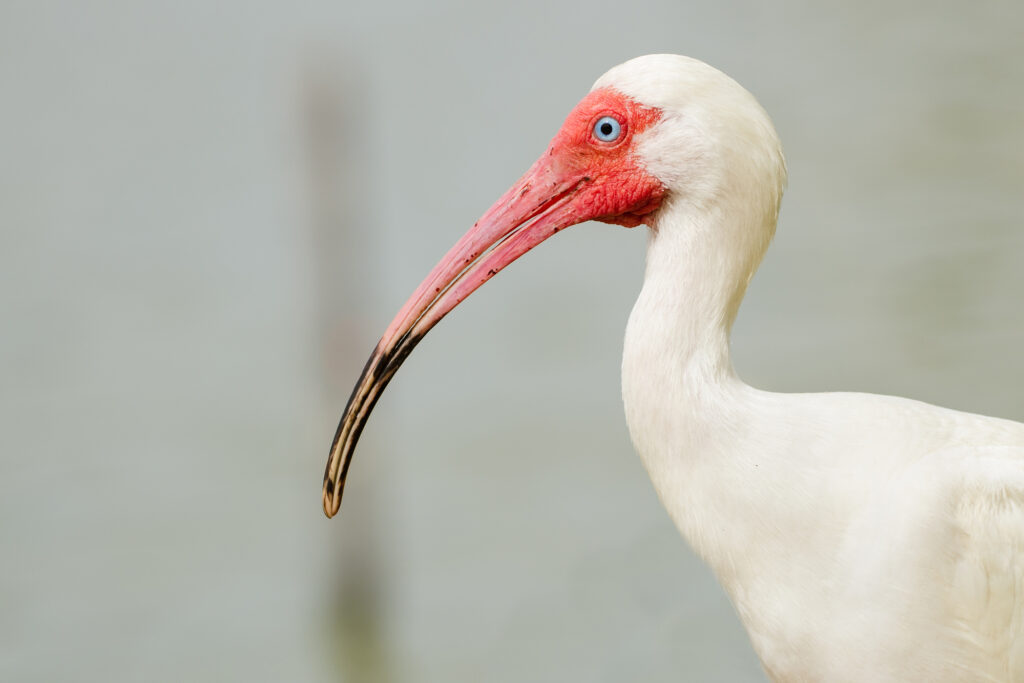There are some gorgeous birds around the world with white heads!
One of the first birds that people in the US think of when you say “bird with a white head” is the Bald Eagle, but that is certainly not the only white-headed bird! There are other raptors with white heads, as well as songbirds, waterfowl, woodpeckers, and more.
Let’s take a look at 17 of the world’s white-headed birds. The more you know about birds, the easier it is to identify them in the wild. If you have the opportunity to travel, you can see even more of these birds with white heads.
We’ll start with the American classic of the Bald Eagle and go from there!
Bald Eagle
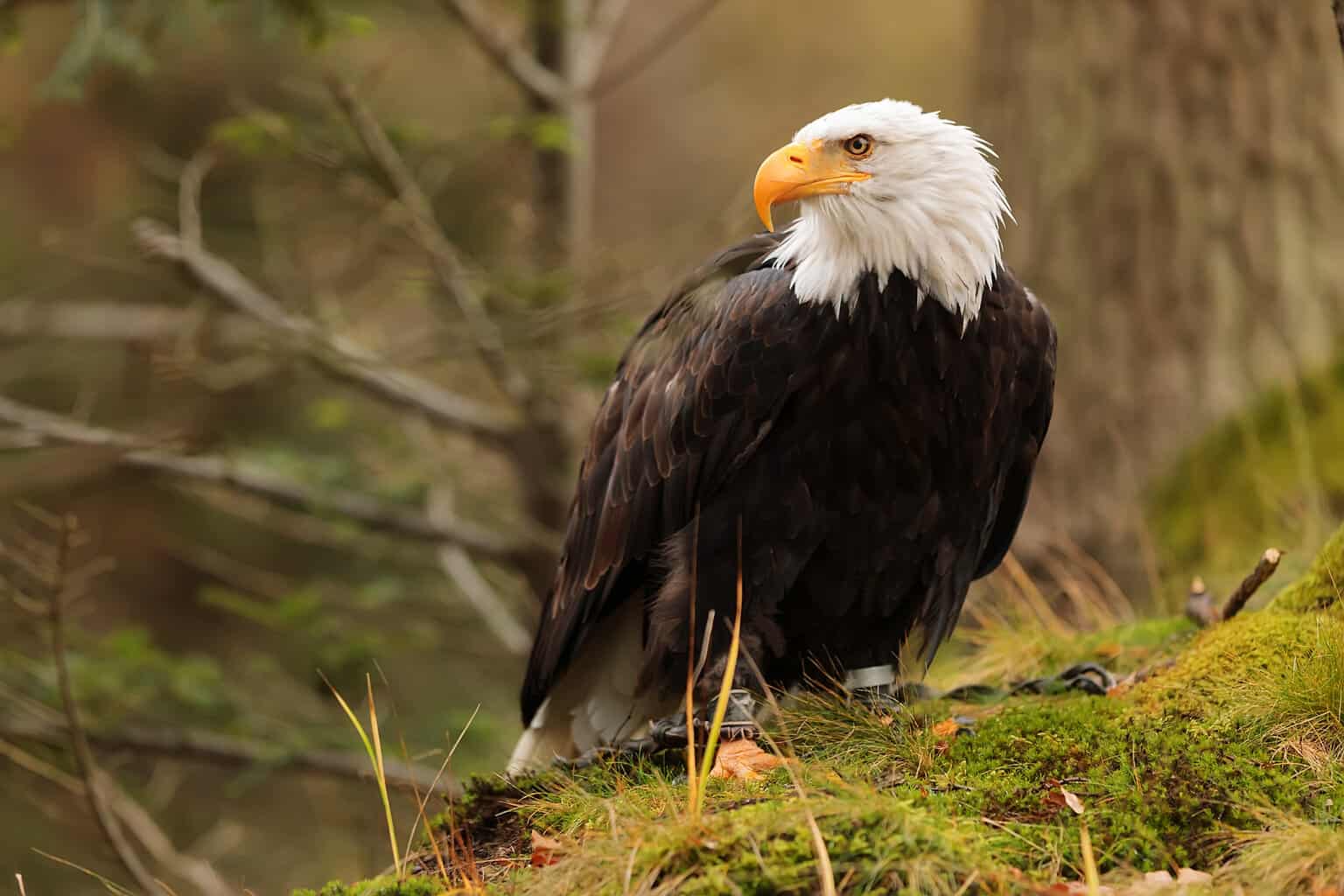
- Scientific Name: Haliaeetus leucocephalus
- Length: 27.9-37.8 in (71-96 cm)
- Weight: 105.8-222.2 oz (3000-6300 g)
- Wingspan: 80.3 in (204 cm)
What they look like: The adult Bald Eagle has white feathers on its head and tail, a dark brown body and wings, a yellow beak, and strong yellow feet. They are not the largest eagles, but they are certainly imposing, especially up close.
Where they live: Bald Eagles live near waterways across North America.
Interesting facts: The Bald Eagle is the national bird symbol of the United States. Bald Eagles do not obtain their full white head plumage until they are 4-5 years old.
Great Egret

- Scientific Name: Ardea alba
- Length: 37.0-40.9 in (94-104 cm)
- Weight: 35.3 oz (1000 g)
- Wingspan: 51.6-57.1 in (131-145 cm)
What they look like: The Great Egret has all bright white feathers, a long S-shaped neck, a yellow bill, and black legs. Males and females look just alike.
Where they live: Great Egrets live in wetland habitats worldwide.
Interesting facts: The Great Egret is a graceful hunter who uses stealth and speed to catch fish. It grows showy breeding plumage during mating seasons but is more muted in the non-breeding season.
Western Cattle Egret

- Scientific Name: Bubulcus ibis
- Length: 18.1-22.1 in (46-56 cm)
- Weight: 9.5-18.1 oz (270-512 g)
- Wingspan: 34.6-37.8 in (88-96 cm)
What they look like: The Western Cattle Egret has all-white feathers, a short neck, and a thick yellow bill. Breeding birds develop an orange color on the head and neck. Interestingly, both sexes develop this coloration.
Where they live: Cattle Egrets live on six continents, often near livestock (hence the name).
Interesting facts: The Cattle Egret got its name because it follows cattle and water buffalo to eat insects that are flushed out by their movements.
Snowy Owl
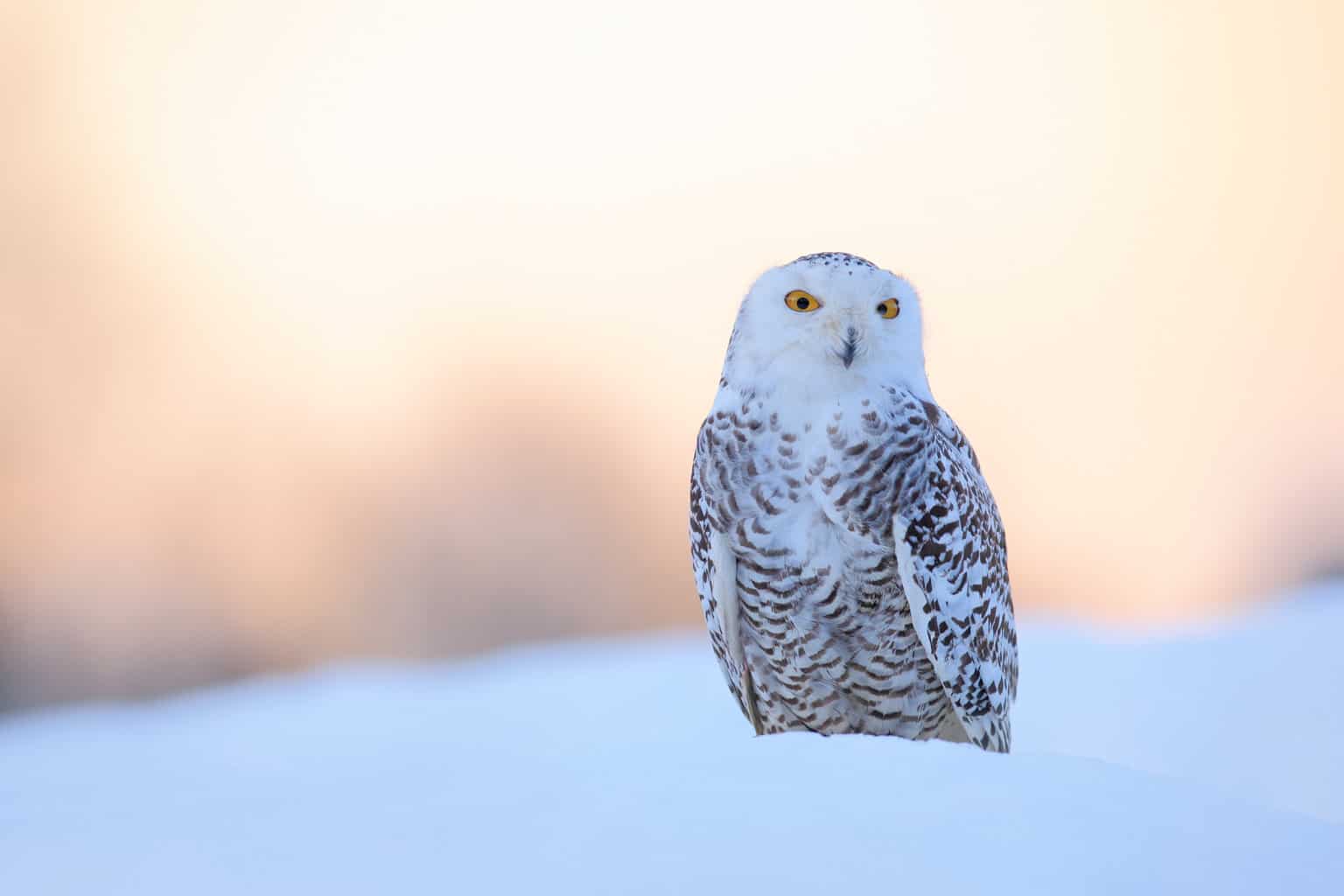
- Scientific Name: Bubo scandiacus
- Length: 20.5-27.9 in (52-71 cm)
- Weight: 56.4-104.1 oz (1600-2950 g)
- Wingspan: 49.6-57.1 in (126-145 cm)
What they look like: Similar in size to a Great Horned Owl, male Snowy Owls are nearly all white, while females have dark spotting. They have a round head with bright yellow eyes.
Where they live: Snowy Owls live on the Arctic tundra, and sometimes migrate as far south as southern Canada and the northern U.S. in winter.
Interesting facts: The Snowy Owl is one of the largest owl species in the world. They are unique in the Arctic because they are daytime hunters. Most owls are nocturnal hunters.
Snow Bunting

- Scientific Name: Plectrophenax nivalis
- Length: 15-18 cm (5.9-7.1 in)
- Weight: 25-40 g (0.9-1.4 oz)
- Wingspan: 32-38 cm (12.6-15.0 in)
What they look like: Snow Buntings are small, chunky songbirds with distinctive plumage differences between genders and seasons. Breeding males have predominantly white plumage with a black back, wings, and tail. In contrast, breeding females exhibit white undersides with a brown, streaky back and a dusky head. Nonbreeding males display white undersides with rusty patches on the crown, ear, and shoulder, as well as dark streaks on their backs. Nonbreeding females have a rusty wash on the face and darker rusty patches on the breast. Both genders have a dark bill that turns yellowish-orange in the nonbreeding season.
Where they live: Snow Buntings breed in the rocky tundra of Arctic regions, preferring areas with low vegetation and rocky outcrops. They nest in cavities to protect their young from predators. During the winter, Snow Buntings can be found in open fields, grasslands, and along the shores of lakes and oceans, especially in areas where debris accumulates due to wave and wind action.
Interesting facts: Snow Buntings are known for their long migrations, with males arriving in breeding grounds first, followed by females around four to six weeks later. These birds can be observed in small undulating flocks during migration.
American White Pelican

- Scientific Name: Pelecanus erythrorhynchos
- Length: 50.0-65.0 in (127-165 cm)
- Weight: 158.7-317.5 oz (4500-9000 g)
- Wingspan: 96.1-114.2 in (244-290 cm)
What they look like: The American White Pelican is a huge white waterbird with black wingtips, a large throat pouch, and a yellow crown. They are sexually monomorphic, meaning that males and females look the same.
Where they live: American White Pelicans live on lakes and coasts across North America.
Interesting facts: These pelicans dive for fish, squeezing out the water before swallowing them whole. They nest in massive colonies of up to a few hundred pairs.
Whooping Crane

- Scientific Name: Grus americana
- Length: 59.1 in (150 cm)
- Weight: 211.6-275.1 oz (6000-7800 g)
- Wingspan: 90.2 in (229 cm)
What they look like: As the tallest bird in North America, the Whooping Crane is all white except for black wingtips and a red and black facial mask. Those black wingtips are only visible when the bird is in flight. Females and males are the same in their appearance.
Where they live: Whooping Cranes nest in Canada or Wisconsin and migrate to the Gulf Coast. They spend the winter in a small north-to-south strip through the Midwest. Their breeding territory is incredibly limited in area; some birds stay in Florida year-round.
Interesting facts: The Whooping Crane was driven to near extinction but is now rebounding. It is still classified as an endangered species. There are only about 800 Whooping Cranes alive today.
Snowy Egret
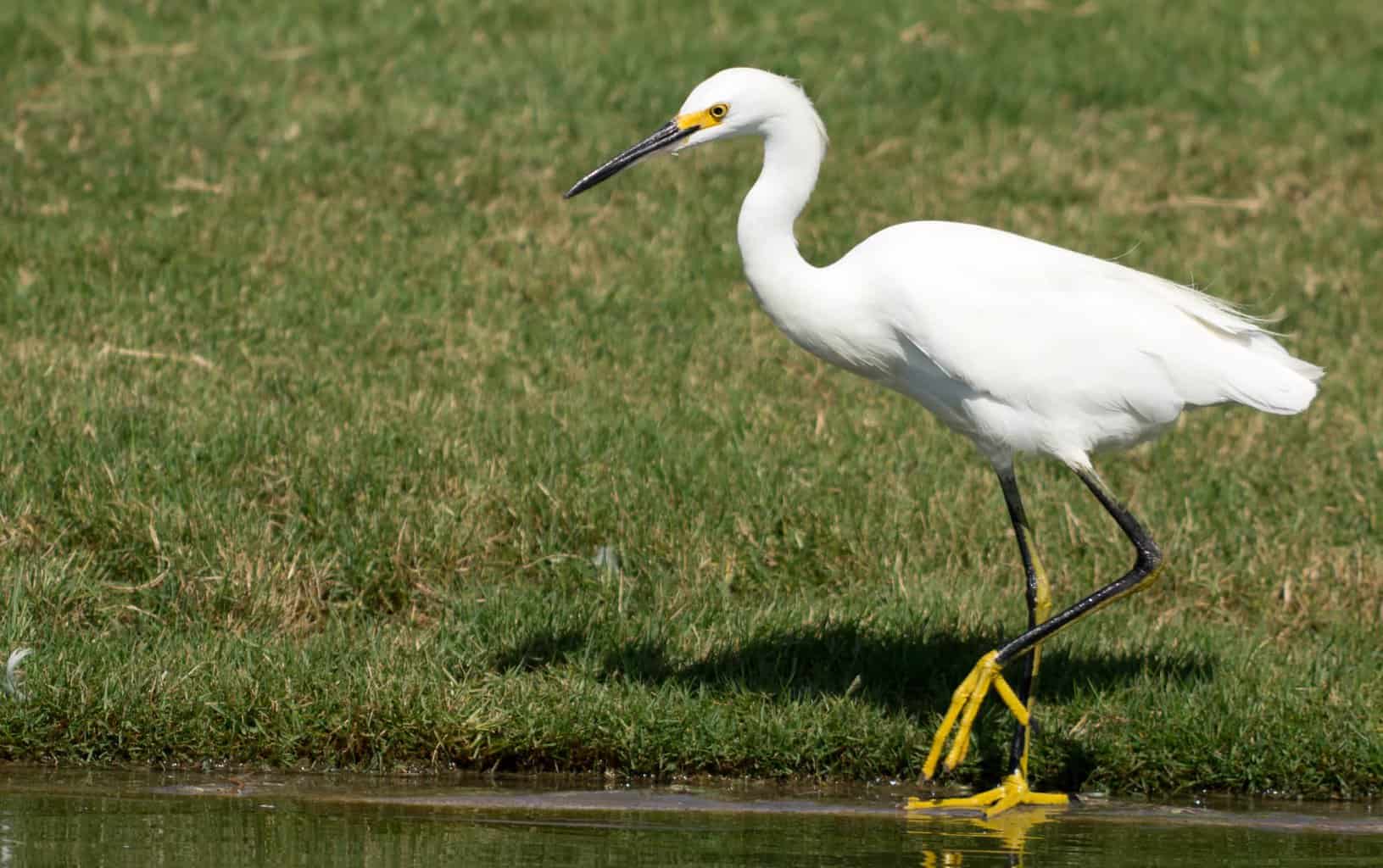
- Scientific Name: Egretta thula
- Length: 22.1-26.0 in (56-66 cm)
- Weight: 13.1 oz (370 g)
- Wingspan: 39.4 in (100 cm)
What they look like: The Snowy Egret is a slender white heron with a thin black bill, black legs, and bright yellow feet. There is no visible difference between males and females.
Where they live: Snowy Egrets live in wetlands across the Americas and coastal areas worldwide. They are year-round residents of almost all of South America. In North America, they are found in Mexico and along the southern coasts of the US.
Interesting facts: They shuffle their yellow feet in the water to stir up fish to catch. Both male and female Snowy Egrets grow showy breeding plumes.
White Ibis

- Scientific Name: Eudocimus albus
- Length: 22.1-26.8 in (56-68 cm)
- Weight: 26.5-37.0 oz (750-1050 g)
What they look like: The White Ibis has completely white feathers except for black wingtips. It has a pink bill and legs. Before they mature, they are patchy brown and white.
Where they live: White Ibises live across the southeastern coastal U.S., the Caribbean islands, Central America, both the east and west coasts of Mexico, and some northern parts of South America.
Interesting facts: White Ibises probe for crustaceans, fish, and insects with their downcurved bills. They nest in colonies, in trees near the water.
Downy Woodpecker

- Scientific Name: Dryobates pubescens
- Length: 5.5-6.7 in (14-17 cm)
- Weight: 0.7-1.0 oz (21-28 g)
- Wingspan: 9.8-11.8 in (25-30 cm)
What they look like: The tiny Downy Woodpecker is black and white with white stripes down its back, white spotted wings, and a white belly. The male has a red spot on its head. Although not strictly white-headed, it’s going on our list because of its dramatic black-and-white striping.
Where they live: Downy Woodpeckers live in forests, woodlands, and parks across North America.
Interesting facts: This common feeder visitor eats insects and suet. It is the smallest woodpecker species in its range.
White-Tailed Tropicbird

- Scientific Name: Phaethon lepturus
- Length: 27-31 in (71-80 cm)
- Wingspan: 35-37 in (89-96 cm)
What they look like: The White-tailed Tropicbird has predominantly white plumage, a black eye mask, and black inner wing bands. It has elongated tail feathers and an orangeish-yellow or orange bill.
Where they live: White-tailed Tropicbirds live on islands in the Atlantic and eastern Pacific Oceans. They are found in Hawaii, the Caribbean, Oceania, and more. They nest on cliffsides and in bushes and trees.
Interesting facts: This species performs dramatic aerial courtship displays in which two birds will fly in unison and the bird that is higher will reach down and touch the tail of the bird that is below. They nest on cliffsides and in bushes/trees.
Black Skimmer
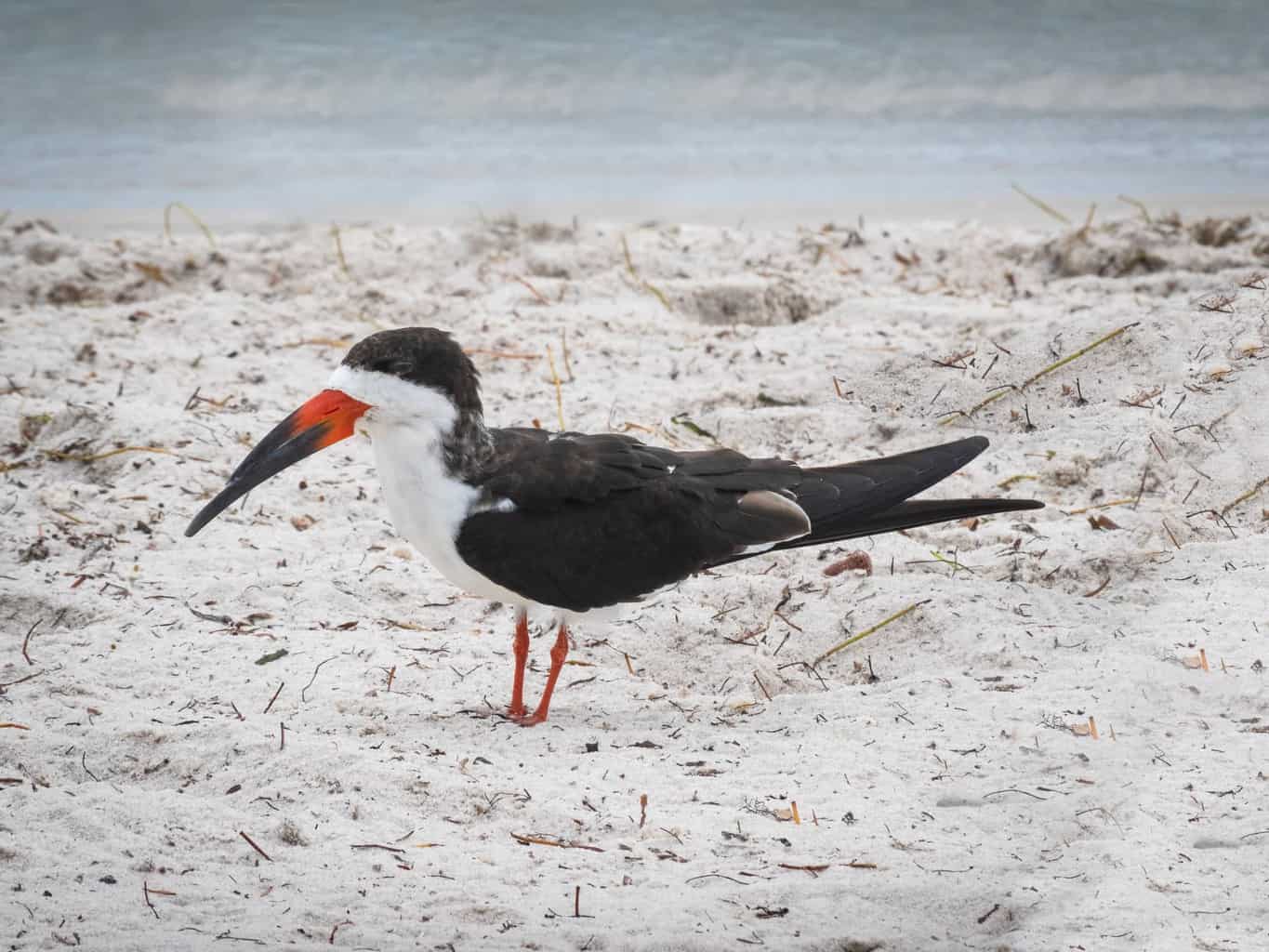
- Scientific Name: Rynchops niger
- Length: 15.8-19.7 in (40-50 cm)
- Weight: 9.3-12.9 oz (265-365 g)
- Wingspan: 42.9-45.3 in (109-115 cm)
What they look like: The Black Skimmer has a black back and cap, a white stripe above its bill to its eye, and a red and black mismatched bill. Its face can be described as being color-blocked in stark contrasting black, white, and red.
Where they live: Black Skimmers live in coastal areas from New Jersey to South America. They are widespread in both coastal and interior South America.
Interesting facts: Their unique bill allows them to skim along the water’s surface, scooping up fish. They nest in colonies, on the beach.
White-Crowned Sparrow
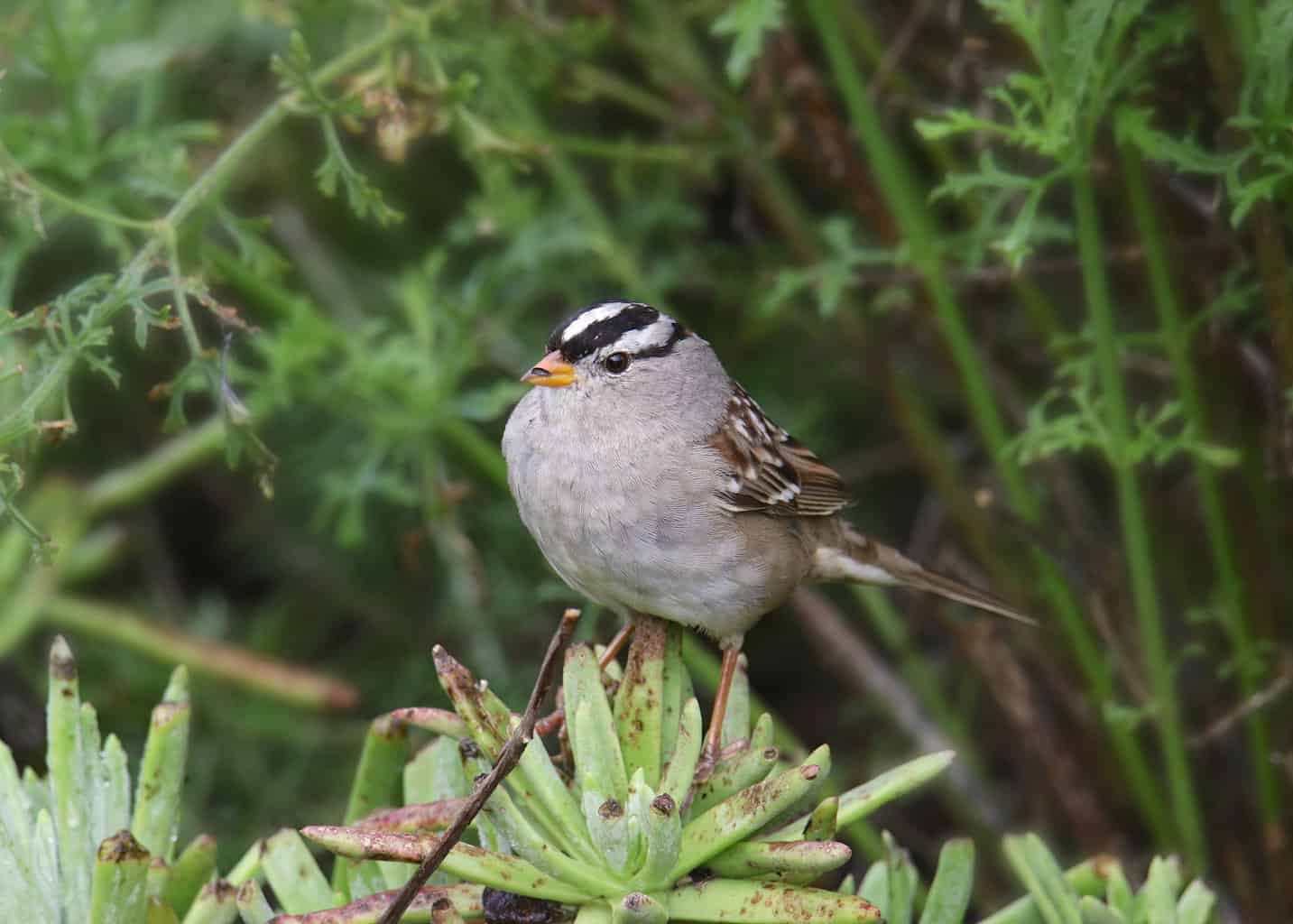
- Scientific Name: Zonotrichia leucophrys
- Length: 5.9-6.3 in (15-16 cm)
- Weight: 0.9-1.0 oz (25-28 g)
- Wingspan: 8.3-9.4 in (21-24 cm)
What they look like: The White-crowned Sparrow is a large sparrow with a bold black and white striped crown, gray underparts, and brown back and wings. There are not many differences between males and females. Like the Downy Woodpecker, it’s on the list for its white and black striping.
Where they live: White-crowned Sparrows breed in Canada and Alaska and winter in the lower 48 United States.
Interesting facts: This species has a distinctive song and is one of the first birds to return to backyards in spring.
Roseate Spoonbill

- Scientific Name: Platalea ajaja
- Length: 27.9-33.9 in (71-86 cm)
- Weight: 42.3-63.5 oz (1200-1800 g)
- Wingspan: 47.2-51.2 in (120-130 cm)
What they look like: The Roseate Spoonbill is a pink waterbird with a pale head, white neck, rose pink wings, and spatula bill. It also has a splotch of yellow over its eye. They get their bright pink plumage by the time they turn 3.
Where they live: Roseate Spoonbills live along the southeastern U.S., Mexico, Central America, and South America coasts.
Interesting facts: They sweep their bills side to side in water to catch fish, shrimp, and insects. They nest in colonies with other birds like ibises, herons, and egrets.
Great White Pelican

- Scientific Name: Pelecanus onocrotalus
- Male Length: 55-71 in (140-180 cm)
- Male Weight: 20-23 lb (9-15 kg)
- Male Wingspan: 7 ft 5 in – 11 ft 10 in (226 – 360 cm)
Females are about 30% smaller than males
What they look like: The Great White Pelican is a massive white waterbird with orange facial skin and pouch, gray legs, and a huge bill. Because of the significant difference in size between males and females, they are one of the only truly sexually dimorphic birds on our list.
Where they live: Great White Pelicans live in Africa, southern Europe, and southwestern and southern Asia.
Interesting facts: They can dive dramatically from heights, but also feed while swimming along the surface.
Snow Goose

- Scientific Name: Anser caerulescens
- Length: 27.2-32.7 in (69-83 cm)
- Weight: 56.4-116.4 oz (1600-3300 g)
- Wingspan: 54.3 in (138 cm)
What they look like: The Snow Goose is a medium-sized goose with two distinct color morphs. The white morph is primarily white except for black wingtips, while the blue morph is bluish-gray with white on the head, neck, and tail tip. Both morphs have rose-red feet and legs, as well as pink bills with black tomia, resembling a “grinning patch.”
Where they live: Snow Geese are known to breed in the Arctic regions of Greenland, Canada, Alaska, and Siberia. During their migrations, they can be found in a variety of habitats, including grasslands, agricultural fields, lakes, ponds, and marshes. Their wintering grounds span from the southwestern United States through Mexico.
Interesting facts: Snow Geese are well-known for their long-distance migrations, traveling thousands of miles between their breeding and wintering grounds. They are highly social birds and often forage and travel in large flocks.
White-Tailed Kite
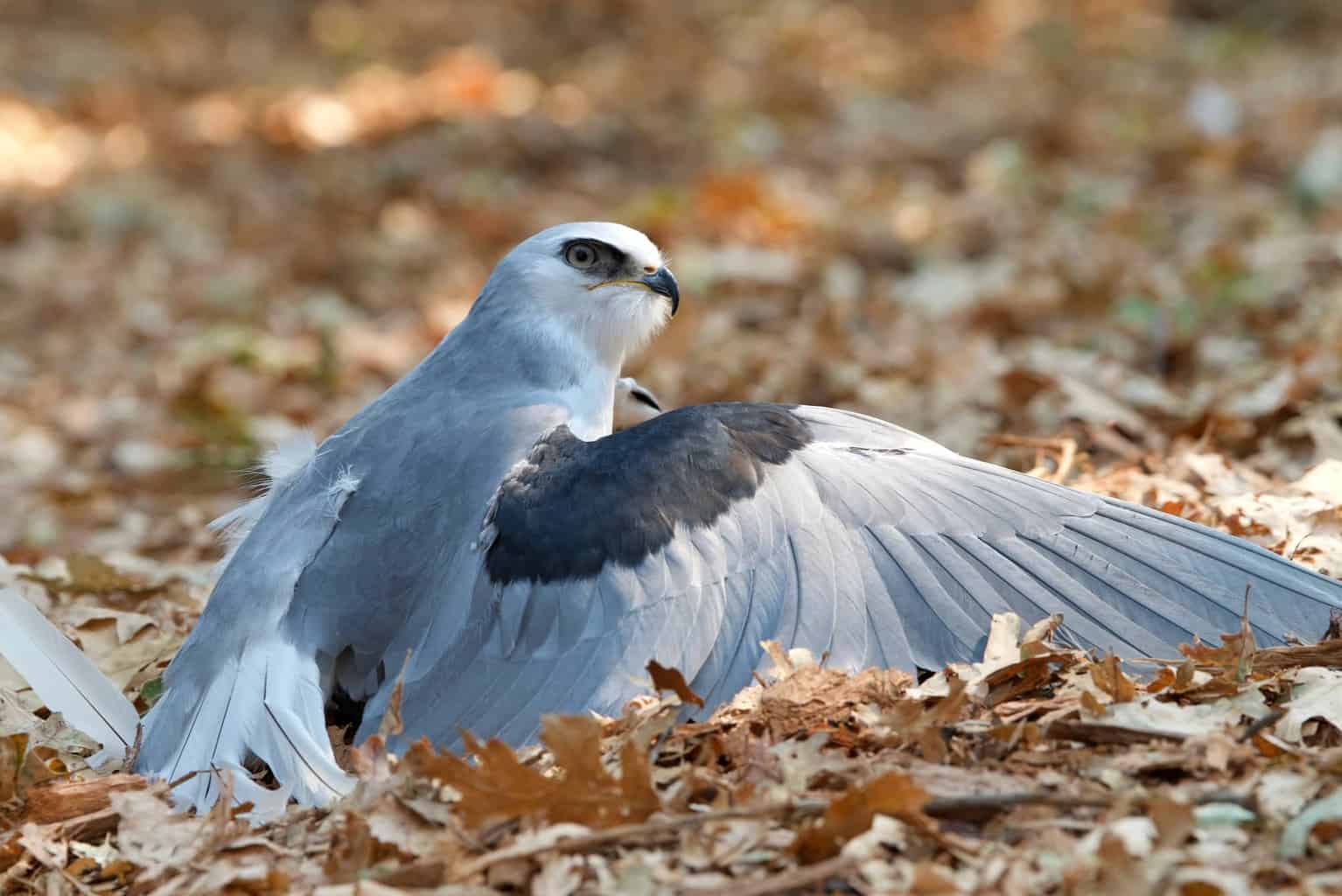
- Scientific Name: Elanus leucurus
- Length: 32-38 cm (12.6-15.0 in)
- Weight: 300-360 g (10.6-12.7 oz)
- Wingspan: 99-110 cm (39.0-43.3 in)
What they look like: The White-tailed Kite is a small to medium-sized raptor with narrow, pointed wings and a long tail. When perched, it looks rather big-headed with a long and skinny body. It has a largely pale appearance, easily identified by its entirely white tail and black shoulder patches. You can also note the white head and red eyes, which are visible at close range. Both sexes look similar.
Where they live: White-tailed Kites can be found in grasslands, open woodlands, savannas, marshes, and cultivated fields in western North America and parts of South America. Their distribution includes regions from southern Texas and eastern Mexico to the Baja California Peninsula, Central and South America, central Argentina, and Chile.
Interesting facts: White-tailed Kites are skilled hunters that feed primarily on rodents, including small opossums, shrews, reptiles, amphibians, and large insects. They are often seen patrolling or hovering over lowland scrub or grassland areas. During the winter months, they roost communally in groups of up to 100.
Enjoy Your Birdwatching!
In the world of avian diversity, there are some truly captivating creatures with white heads that grace our skies and landscapes. The notion of birds with white heads often conjures up images of the iconic Bald Eagle, a symbol of strength and freedom in the United States. However, the realm of white-headed birds extends far beyond this one majestic raptor.
We’ve just explored a diverse array of these magnificent birds, each with its own unique characteristics and habitat preferences. From raptors to songbirds, and waterfowl to woodpeckers, these birds with snowy crowns offer an enchanting spectacle for bird enthusiasts and nature lovers.
The habitats these birds call home are as diverse as their appearances. From the tundra to wetlands, coastal regions to forests, these birds have adapted to a wide range of ecosystems, reflecting nature’s endless creativity.
Observing these birds in their natural habitats is a privilege that allows us to connect with the wonders of the avian world. Whether you are a seasoned birder or someone who simply enjoys the beauty of the natural world, knowing more about these birds can enhance your appreciation of their existence.
So, as you venture into the world of birdwatching or plan your next journey to witness these stunning creatures firsthand, remember that the more you learn about them, the better equipped you are to identify and appreciate the white-headed wonders that grace our skies and landscapes!
And if you ever find yourself in the right place at the right time, you might just catch a glimpse of these beautiful birds in all their glory. Happy birding!

